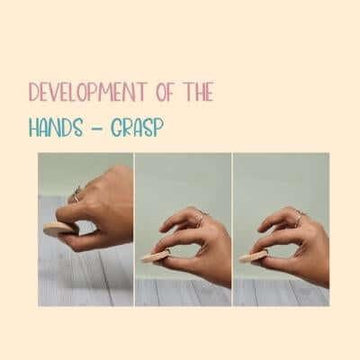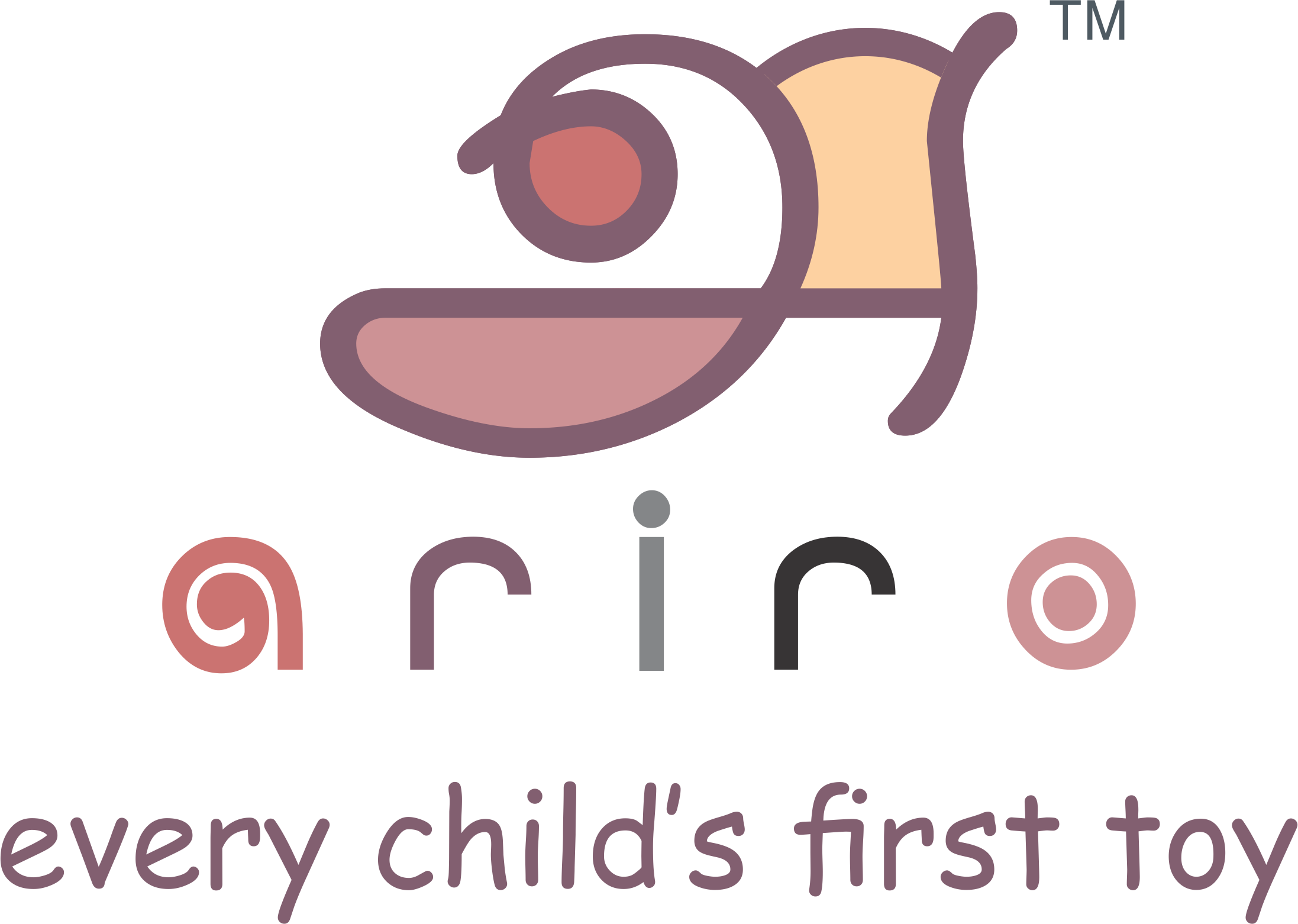
It is the most heartening moment when a newborn baby grasps your finger with their tiny hands – the stuff of photographs and poetry. However, this grasp is involuntary. Babies are born with a grasping reflex – this means that till about 2-3 months, they will involuntarily try and hold on to anything you bring close to their hands.
After the 3rd month this grasping reflex begins to integrate, and babies slowly move from involuntary to voluntary movement. Let’s understand the timeline of developing grasps in infancy – this will help us to observe our young children and meet their needs in a timely and developmentally appropriate manner.

Crude Palmer Grasp / (4- 5 month onwards)
Babies begin to reach out use their four fingers squeezed against the palm. The outer edge of the palm is used to grasp. The thumb in not used in this grasp.
 Palmer Grasp ( 5-6 month onwards)
Palmer Grasp ( 5-6 month onwards)
Babies begin to grasp at objects by squeezing their palm more towards the centre. Four fingers are used but the thumb is still not in opposition.

Radial Palmer Grasp (7 to 8 months onwards )
The beginning of the use of the thumb, it is however still not in opposition. Babies grasp by squeezing using the part of palm under the thumb.

Raking Grasp (7 months onwards)
Babies curve their four fingers and use it like a rake to bring objects closer to them.

Radial Digital Grasp ( 8 to 9 months)
For the first time, babies start to use their thumb in opposition. They can now hold an object between their four fingers and thumb without needing the support of their palm.

Inferior/Immature Pincer Grasp (8 to 9 months)
Now that the thumb is in opposition, babies begin to grasp objects between their index, middle finger and thumb – but they still use their whole fingers to grasp.

Mature pincer grasp (12 months onwards)
Babies now begin to hold objects by using the tips of their index and middle finger and thumb.








